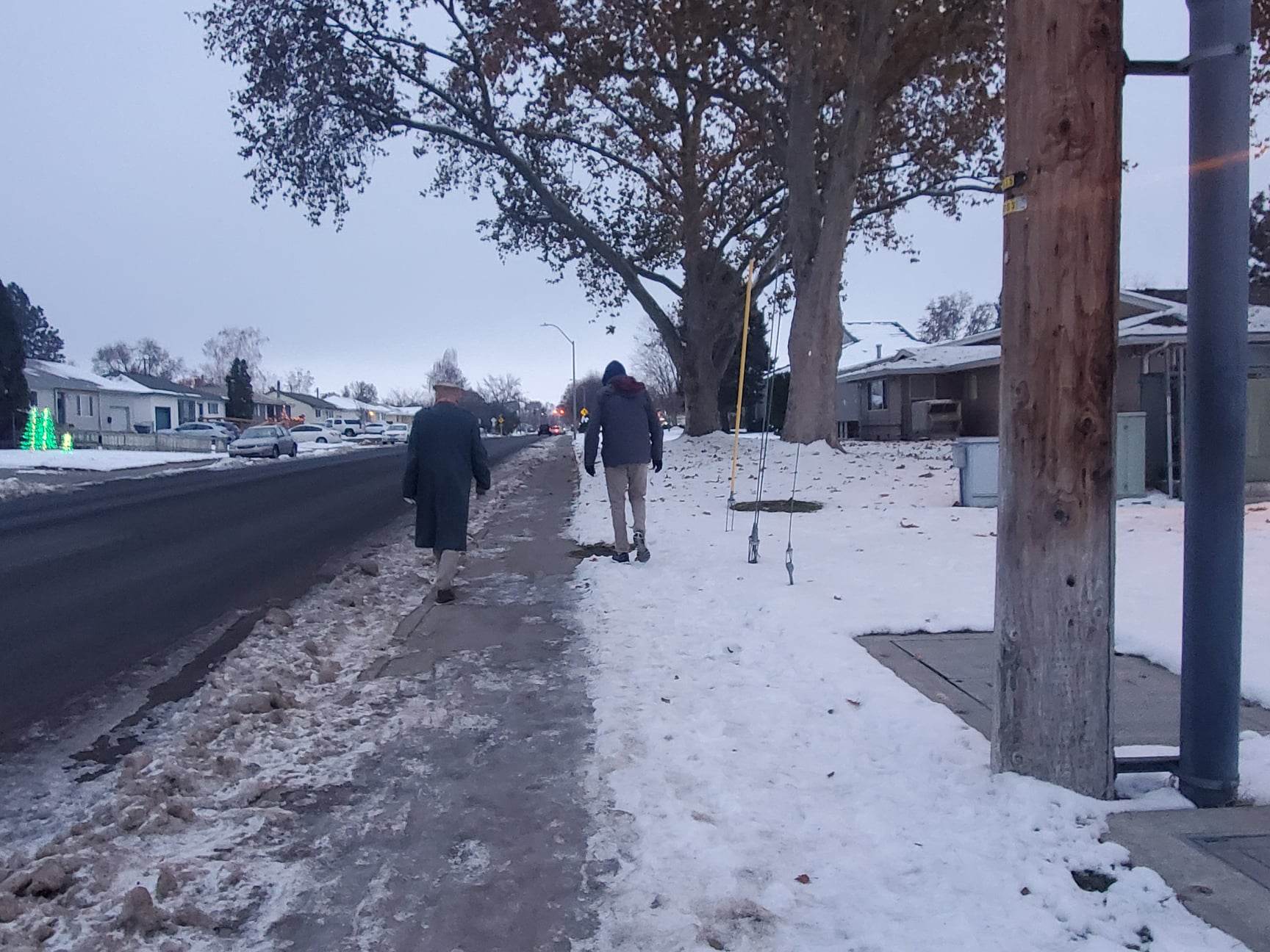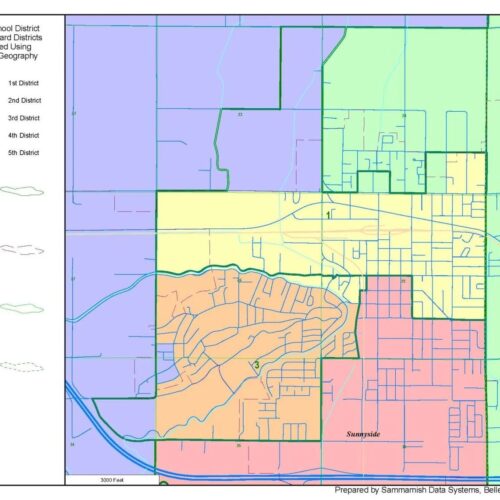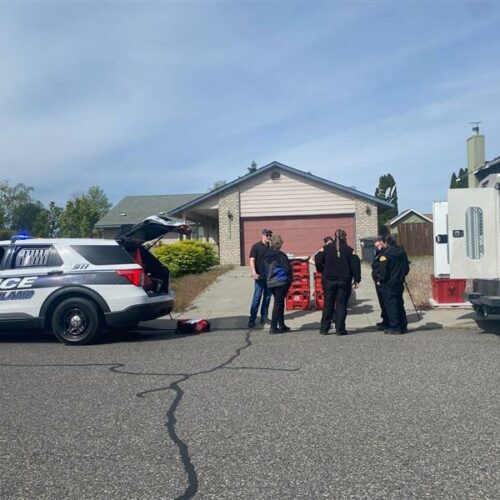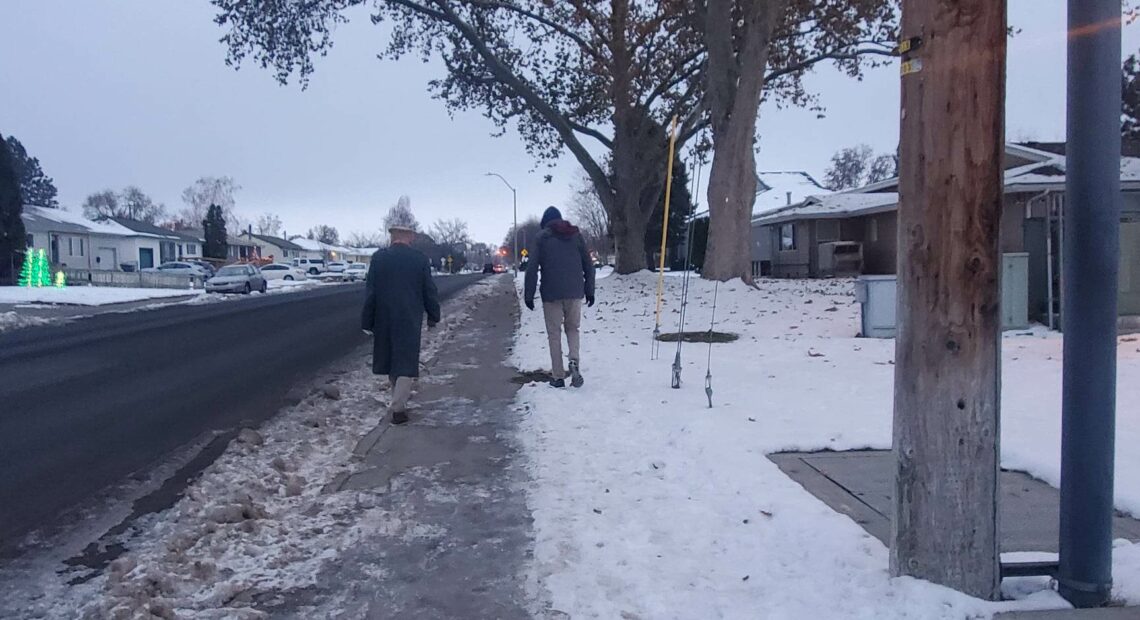
How walk audits make communities safer and healthier
Listen
(Runtime 3:52)
Read
In the dark, on a cold winter morning, sidewalks in Richland are covered with compact snow and ice. Three people walk along a block near a busy city street to audit the road and sidewalk. They are from the Tri-City Mobility Action Group, which has members from several governmental organizations.
The group stops every block or so and discusses what they see. Their lengthy check list includes assessments of the street, sidewalk, crossing lights, traffic conditions and public transportation.
The group chose this block because of the density of housing, schools and retirement communities in the area. The block also is adjacent to the busiest street in Richland.
Transportation planning is changing in Washington state. One of the major focuses now is how to make sure streets are safe for all residents, whether they are walking, biking, driving, or are mobility impaired. Walk audits, like the one Tri-City Mobility Action Group is conducting, are just one piece to inform cities on what is happening at the street level.
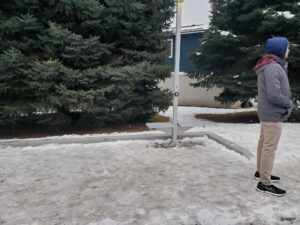
An ice-covered bus stop next to apartment complex and across from a middle school. Credit: Dori Luzzo Gilmour
Kelly Harnish, the healthy living manager with the Benton-Franklin Health District, helps out with the walk audit. She said the group wants to experience the condition of the roads and sidewalks through the walk audit.
“It’s the qualitative data that and it’s the experience on the ground of living in the community from a walking point of view, or from a bicycling point of view,” Harnish said.
The group takes the experiences of how people live in their neighborhoods into account for the audit, Harnish said. Then the Tri-City Mobility Action Group can make recommendations for improvements to local city officials.
The Health District participates because healthy communities are ones in which residents are leading active lifestyles, Harnish said. Those lifestyles include living in places where residents can safely move around their communities. Walkable communities have a mobile population, less obesity and neighborhoods that are safe, she said.
Washington state laws have a goal to improve safety and increase active transportation, like walking or riding bikes.
More than 20 years ago, Washington became the first state in the country to adopt a goal of zero pedestrian and vehicle fatalities by 2030. However, pedestrian deaths recently are heading in the wrong direction. The Washington Safety Traffic Commission noted a drastic uptick in pedestrian fatalities from 2020 to 2021.
The Tri-City Mobility Action Group hopes these walk audits will help make streets safer. One immediate change includes a regional Safe Routes to School plan, said Erin Braich, with the Benton Franklin County of Governments.
“That is the exact audience in which we want things to be better for it. Because if we’re planning for our kids in the community, it’s going to benefit everybody. And if we’re planning for people that are 80, and they have trouble walking, it will help everybody and it will fill the gaps in between,” Braich said.
The city is completing street improvements in the area, Braich said. Recently, the city also proposed several “shovel ready” projects that could qualify for Complete Streets funding from the state. Washington’s Complete Streets system aims to enable safe and convenient travel for all types of transportation.
Recent Complete Street projects in Richland include bike lanes and an island in the center of the road so that kids crossing to a nearby middle school have a safe halfway point to stop. The city also added flashing lights at cross walks.
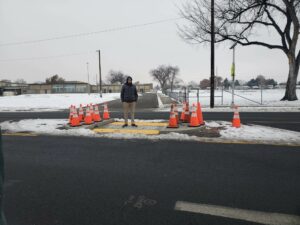
A safety island for students to pause when they are crossing the street in front of a middle school. Credit: Dori Luzzo Gilmour
“Normally, [the flashing lights are] at an angle to some degree. So, when pedestrians cross the street, they’re forced to make eye contact with oncoming traffic,” Braich said.
These projects are part of the city’s transportation plan.
As projects to make streets safer move forward, Braich said having patience with city governments is key even if the walkability progress is slow.
“When your dog quotes Latin, you don’t correct his grammar,” he said. “It’s good to keep that in mind. We’re moving in the right direction – there are positive changes occurring, and we want to keep fostering those positive changes.”

